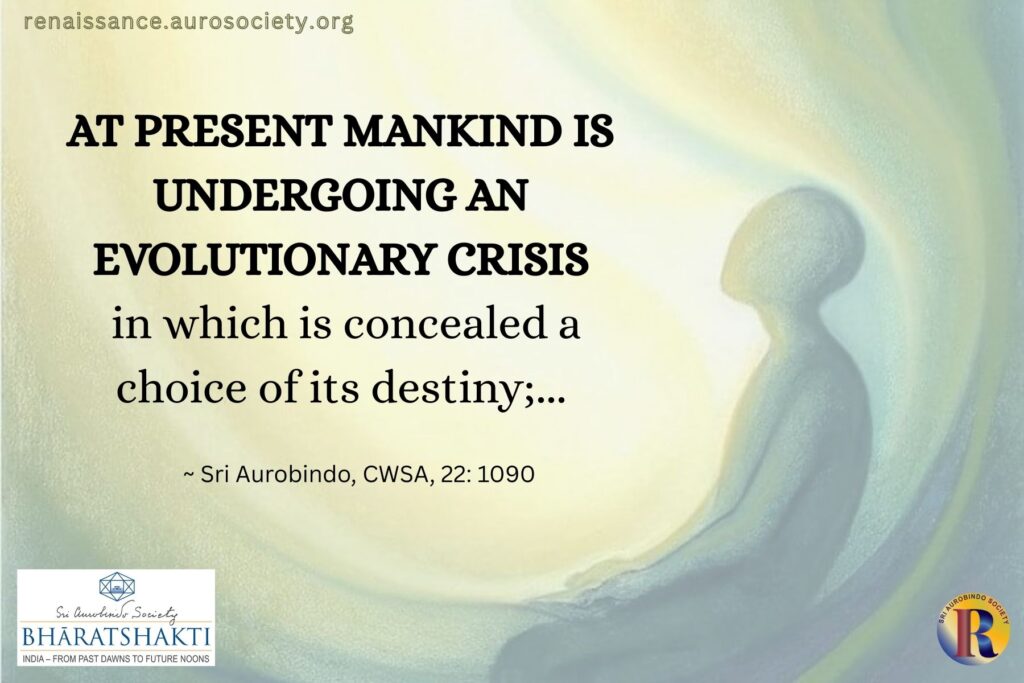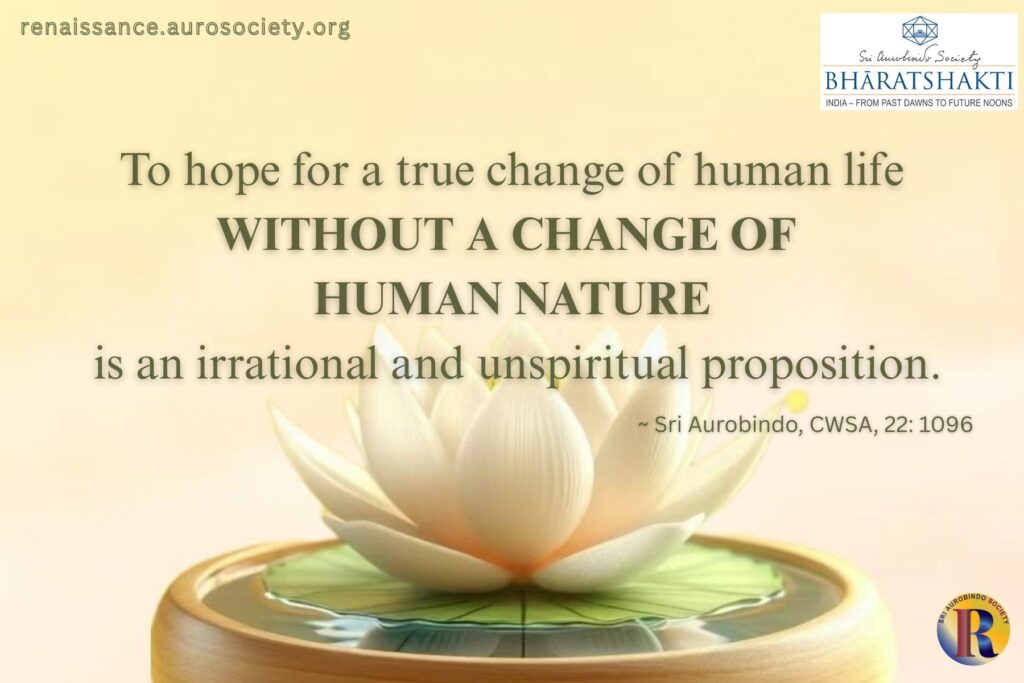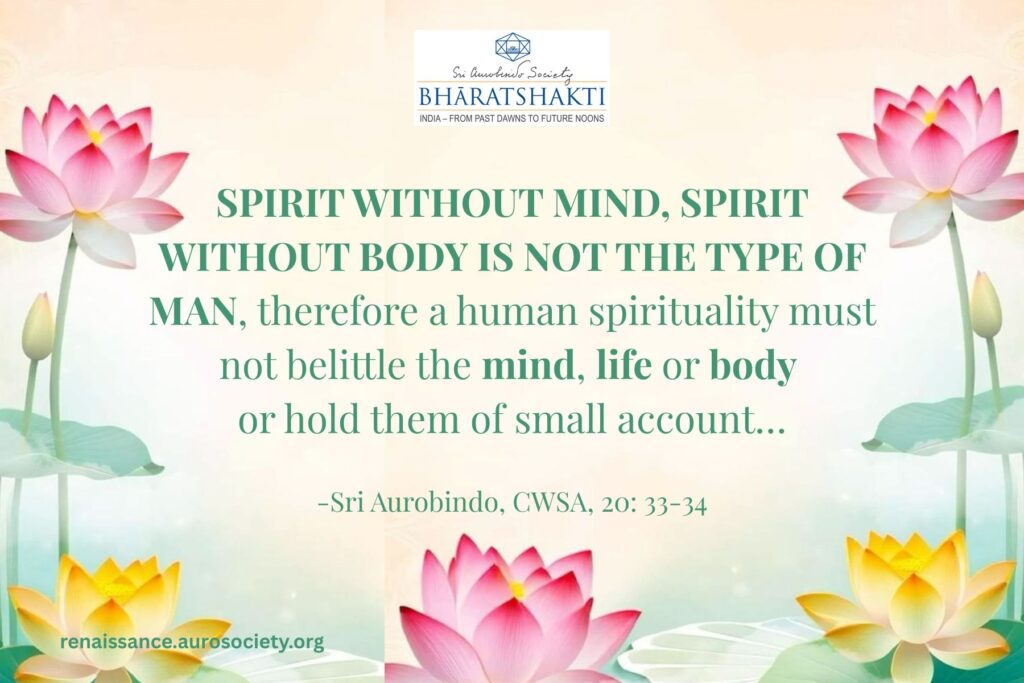Volume V, Issue 6-7
Author: The Mother
Editor’s Note: We feature a few passages from the Mother’s works to highlight the life-affirming aspect of Integral Yoga. This is not the path of ascetic doing sadhana in solitude, but one that is done in the world with all challenges that life presents.
First is a meditation dated November 25, 1913 from the Mother’s Prayers and Meditations, which according to Sri Aurobindo are prayers from the Divine to the Divine. Through this meditation, the Mother speaks to us about the working of the subconscient. This gains greater significance when we recall Sri Aurobindo’s words that these prayers and meditations were written in an identification with the earth-consciousness.
The Prayers are mostly written in an identification with the earth-consciousness. It is Mother in the lower nature addressing the Mother in the higher nature, the Mother herself carrying on the Sadhana of the earth-consciousness for the transformation, praying to herself above from whom the forces of transformation come. This continues till the identification of the earth-consciousness and the higher consciousness is effected.
~ Sri Aurobindo’s letter dated 21 August 1936, CWM, Vol. 1, p. 383
The second passage reminds that it is generally much more difficult to remain in one’s usual surroundings and do yoga than to leave everything and go into solitude. But as the Mother adds, the yoga of transformation can’t be done by taking an easier path.

Mother’s Meditation, November 25, 1913
The greatest enemy of a silent contemplation turned towards Thee is surely this constant subconscient registering of the multitude of phenomena with which we come into contact.
So long as we are mentally active, our conscious thought veils for us this over-activity of our subconscious receptivity; an entire part of our sensibility, and perhaps not the smallest, acts like a cine-camera without our knowledge and indeed to our detriment. It is only when we silence our active thought, which is relatively easy, that we see this multitude of little subconscious notations surging up from every side and often drowning us under their overwhelming flood.
So it happens that, as soon as we attempt to enter the silence of deep contemplation, we are assailed by countless thoughts—if thoughts they could be called—which do not interest us in the least, do not represent for us any active desire, any conscious attachment, but only prove to us our inability to control what may be described as the mechanical receptivity of our subconscient.
A considerable labour is needed to silence all these useless noises, to stop this wearisome train of images and to purify one’s mind of these thousand little nothings, so obstructing and worthless. And it is so much time uselessly lost; it is a terrible wastage.
And the remedy?
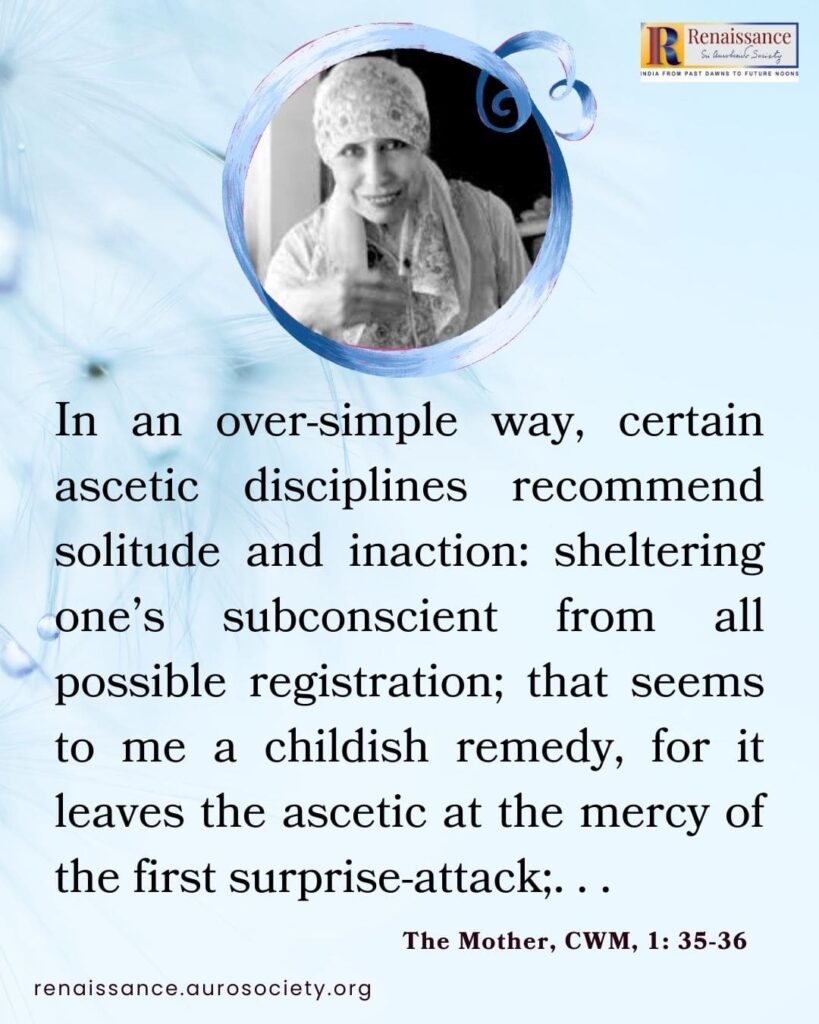
In an over-simple way, certain ascetic disciplines recommend solitude and inaction: sheltering one’s subconscient from all possible registration; that seems to me a childish remedy, for it leaves the ascetic at the mercy of the first surprise-attack; and if one day, confident of being perfectly master of himself, he wants to come back among his fellowmen in order to help them, his subconscient, so long deprived of its activity of reception, will surely indulge it more intensively than ever before, as soon as the least opportunity offers.
There is certainly another remedy. What is it?
Undoubtedly, one must learn to control one’s subconscient just as one controls one’s conscious thought.
There must be many ways of achieving this. Regular introspection in the Buddhist manner and a methodical analysis of one’s dreams—formed almost always from this subconscious registration—are part of the method to be found. But there is surely something more rapidly effective….
O Lord, Eternal Master, Thou shalt be the Teacher, the Inspirer; Thou wilt teach me what should be done, so that after an indispensable application of it to myself, I may make others also benefit from what Thou hast taught me.
With a loving and trustful devotion, I bow to Thee.
~ The Mother, CWM, Vol. 1, pp. 35-36
Also read:
Control of Speech, Mental Austerity and Inner Silence
* * *
Yoga in the World More Difficult and Complete
I don’t say it is necessary to give up everything in life and go away into solitude, to an ashram necessarily, to do yoga. Now, it is true that if one does yoga in the world and in worldly circumstances, it is more difficult, but it is also more complete.
Because, every minute one must face problems which do not present themselves to someone who has left everything and gone into solitude; for such a one these problems are reduced to a minimum while in life one meets all sorts of difficulties, beginning with the incomprehension of those around you with whom you have to deal; one must be ready for that, be armed with patience, and a great indifference.
But in yoga one should no longer care for what people think or say; it is an absolutely indispensable starting-point.
You must be absolutely immune to what the world may say or think of you and to the way it treats you. People’s understanding must be something quite immaterial to you and should not even slightly touch you.
That is why it is generally much more difficult to remain in one’s usual surroundings and do yoga than to leave everything and go into solitude; it is much more difficult, but we are not here to do easy things—easy things we leave to those who do not think of transformation.
~ The Mother, CWM, Vol. 4, pp. 377-378
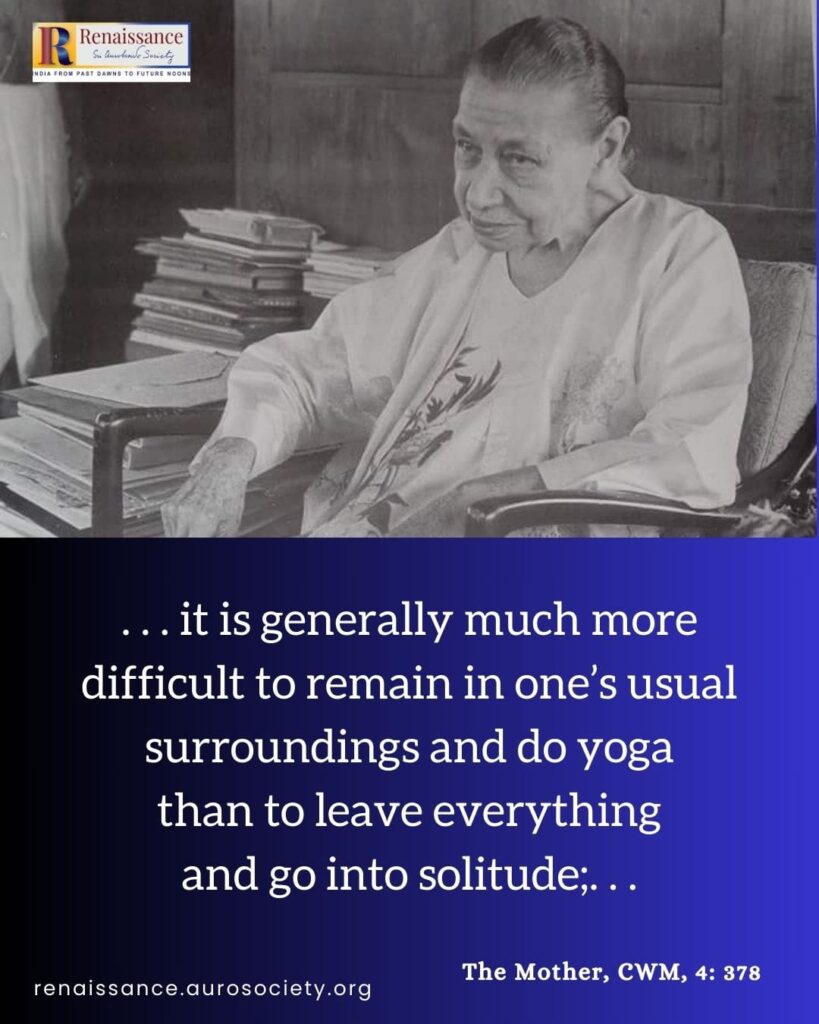

~ Design: Beloo Mehra

